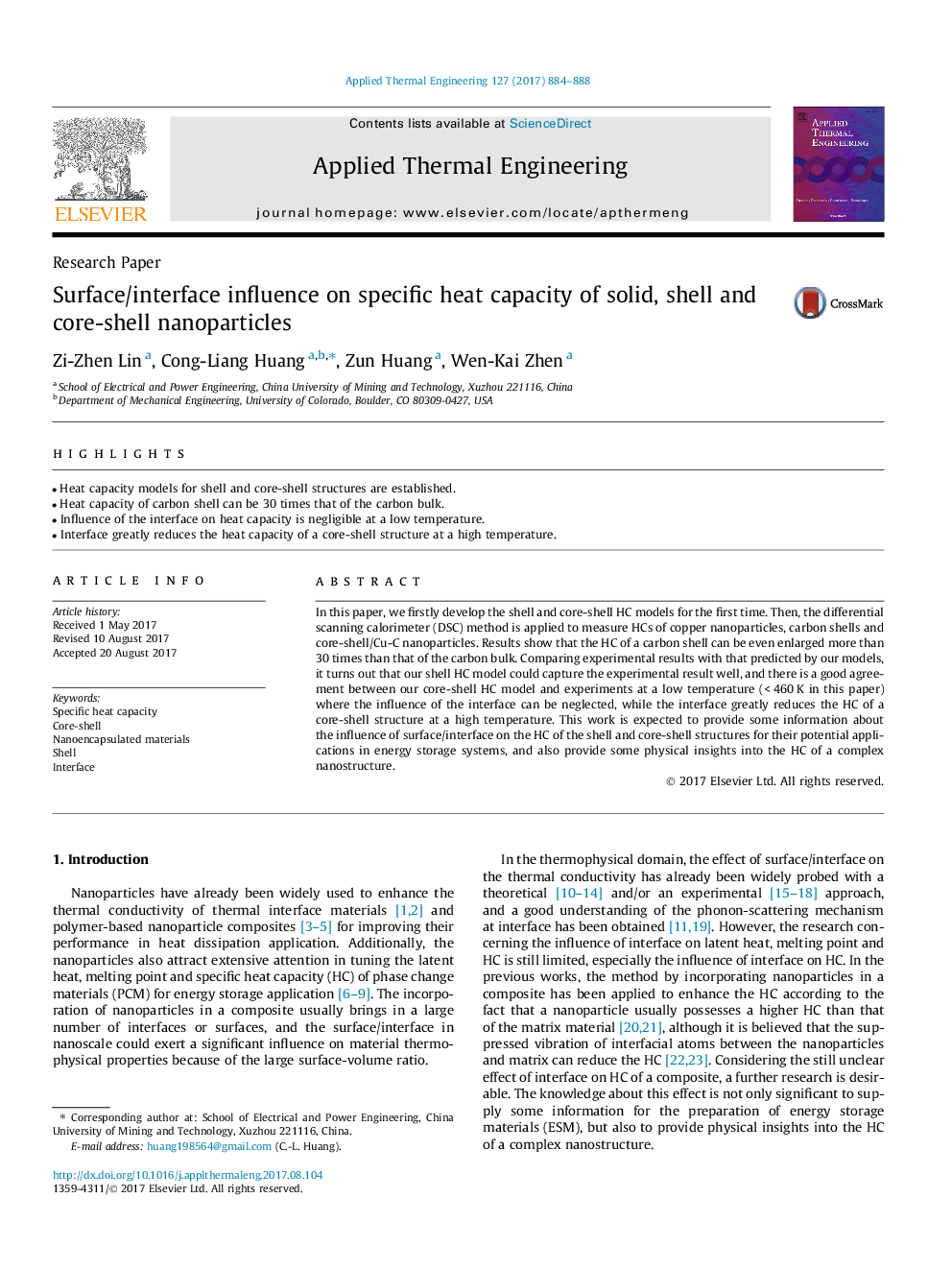| Article ID | Journal | Published Year | Pages | File Type |
|---|---|---|---|---|
| 4990771 | Applied Thermal Engineering | 2017 | 5 Pages |
Abstract
In this paper, we firstly develop the shell and core-shell HC models for the first time. Then, the differential scanning calorimeter (DSC) method is applied to measure HCs of copper nanoparticles, carbon shells and core-shell/Cu-C nanoparticles. Results show that the HC of a carbon shell can be even enlarged more than 30 times than that of the carbon bulk. Comparing experimental results with that predicted by our models, it turns out that our shell HC model could capture the experimental result well, and there is a good agreement between our core-shell HC model and experiments at a low temperature (<Â 460Â K in this paper) where the influence of the interface can be neglected, while the interface greatly reduces the HC of a core-shell structure at a high temperature. This work is expected to provide some information about the influence of surface/interface on the HC of the shell and core-shell structures for their potential applications in energy storage systems, and also provide some physical insights into the HC of a complex nanostructure.
Related Topics
Physical Sciences and Engineering
Chemical Engineering
Fluid Flow and Transfer Processes
Authors
Zi-Zhen Lin, Cong-Liang Huang, Zun Huang, Wen-Kai Zhen,
